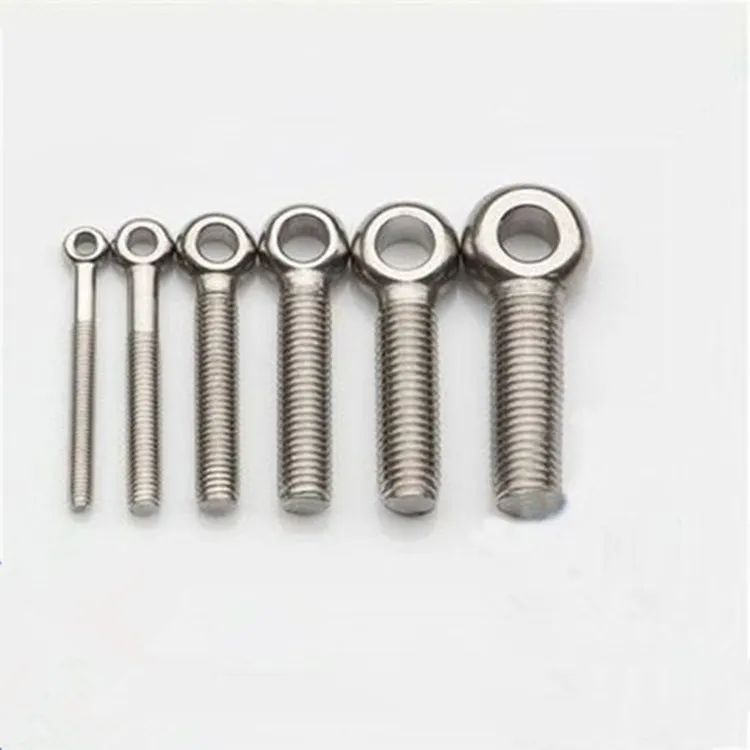

Understanding the Function and Design of Hexagonal Lock Nuts in Mechanical Applications
Dec . 09, 2024 18:00 Back to list
Understanding the Function and Design of Hexagonal Lock Nuts in Mechanical Applications
Understanding Hexagonal Lock Nuts An Essential Component in Mechanical Engineering
Hexagonal lock nuts, often simply referred to as lock nuts, are a critical component in various mechanical and structural applications. Known for their reliability and securing capabilities, these nuts play a significant role in ensuring the stability and safety of assembled machinery, vehicles, and infrastructure.
What is a Hexagonal Lock Nut?
A hexagonal lock nut is a type of fastening device characterized by its six-sided (hexagonal) shape and the unique locking mechanism that prevents it from loosening under vibration or torque. These nuts are typically used with bolts or studs, providing a secure fastening solution that maintains integrity under dynamic conditions. They are often made from materials such as steel, stainless steel, or other alloys to enhance their durability and resistance to environmental factors.
The Need for Lock Nuts
In many applications, mechanisms are subjected to vibrations, thermal expansions, and varying loads. Traditional nuts can loosen over time, leading to potential mechanical failures. This is where hexagonal lock nuts come into play. Their design incorporates features such as nylon inserts, serrated edges, or additional locking surfaces to prevent movement. As a result, they provide a more reliable fastening solution, ensuring that components remain securely attached, even under challenging operating conditions.
Types of Hexagonal Lock Nuts
There are several types of hexagonal lock nuts, each designed for specific applications
1. Nylon Insert Lock Nuts These nuts utilize a nylon collar inserted into the nut that grips the bolt threads, creating friction that helps keep the nut in place. This design is particularly effective for applications with moderate vibration.
hexagonal lock nut

2. Serrated Flange Lock Nuts These feature a serrated surface that bites into the base material or the component being fastened, providing an effective grip that helps prevent loosening. They are ideal for heavy-duty applications where significant movement and stress are expected.
3. Castle Nuts These nuts have projecting pins or a threaded hole to accept a cotter pin. They are commonly used in automotive and aerospace applications where safety is paramount.
4. Locking Washers While not nuts in the traditional sense, these washers are often used in conjunction with hexagonal lock nuts to provide added security by increasing friction and stability.
Applications in Various Industries
Hexagonal lock nuts are utilized across numerous industries, including automotive, construction, aerospace, and machinery. In the automotive sector, they are used to secure critical components such as wheel assemblies and engine fixtures. In construction, hexagonal lock nuts help maintain structural integrity in beams and columns, often subjected to dynamic forces.
Moreover, in the aerospace industry, where safety is crucial, these nuts ensure that vital components of aircraft remain securely fastened during operation. The high reliability of hexagonal lock nuts makes them essential in applications where failure is not an option.
Conclusion
In conclusion, hexagonal lock nuts are an indispensable element in mechanical engineering and fastener technology. Their design and functionality address the crucial need for secure, reliable fastening in a variety of applications. As industries continue to evolve, the importance of these locking devices will only grow, underscoring their role as a foundational component in the safe assembly of machinery and structures. Whether you are designing a new product or maintaining existing equipment, considering the use of hexagonal lock nuts can significantly enhance the performance and durability of your assembly.
Latest news
-
Premium Fasteners Manufacturer | AI-Driven Solutions
NewsAug.01,2025
-
Hot Dip Galvanized Bolts - Hebei Longze | High Strength, Corrosion Resistance
NewsAug.01,2025
-
High-Strength Hot Dip Galvanized Bolts - LongZe | Corrosion Resistance, Custom Sizes
NewsAug.01,2025
-
Best Self Tapping Screws for Drywall - Fast & Secure Installation
NewsJul.31,2025
-
High-Strength Hot Dip Galvanized Bolts-Hebei Longze|Corrosion Resistance&Customization
NewsJul.31,2025
-
Hot Dip Galvanized Bolts-Hebei Longze Metal Products|Corrosion Resistance&High Strength
NewsJul.31,2025

